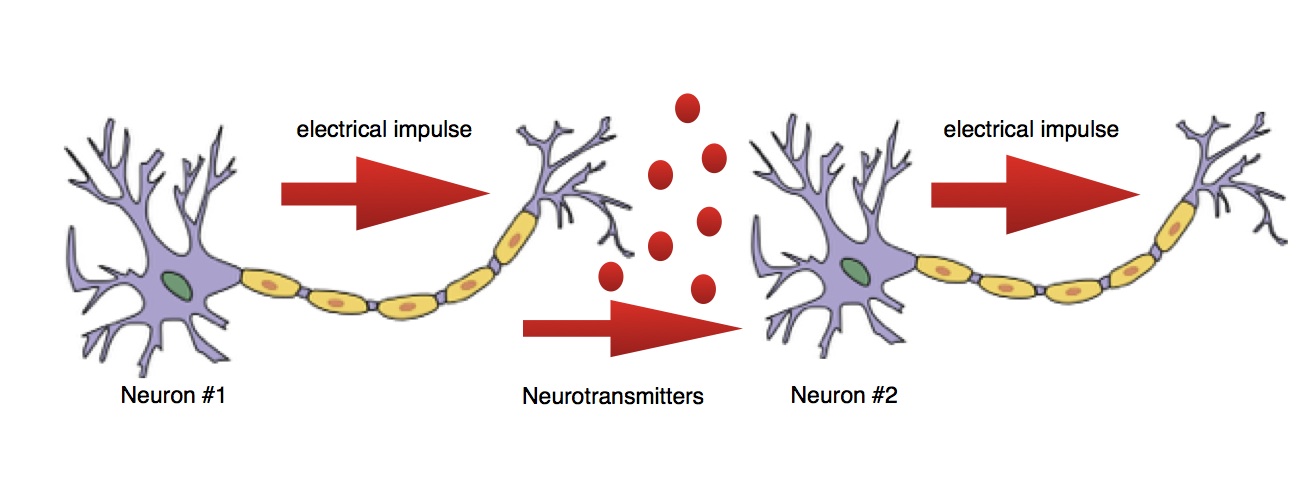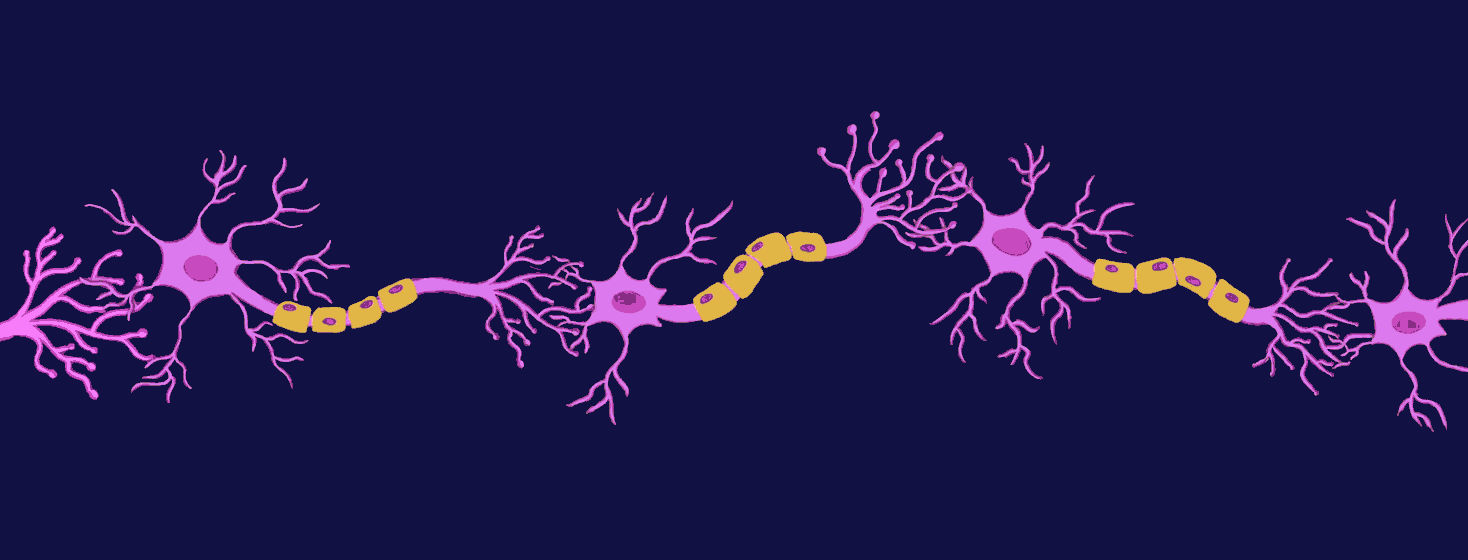Everything You Need to Know About Nerves
Nerves are responsible for carrying signals between the central nervous system (CNS) and the peripheral nervous system (PNS). Going back to our tree metaphor from Part 1: Understanding the Nervous System, the nerves are what carry water from the ground through the tree’s roots and trunk, and into the branches, resulting in nice green leaves. Now, replace "water" with chemical and electrical signals, and you’ve pretty much got it down!1
MS targets our nerves, so it is important to understand how they work if you want to understand MS.
Facts about nerves
Lucky for us, all normal nerves have 3 things in common.
1. Nerves are excitable
They’re like that lady at the nail salon who knows everything about everyone and excitedly gossips to everyone who will listen. Sensory nerves recognize things like heat and hunger and get so excited that they create an electrical current. This electrical signal quickly runs up a series of nerves to the CNS so action can be taken.1
2. Nerves are conductive
An electrical cord’s job is to get electricity from a wall socket to a TV so we can watch our favorite show. Similarly, a nerve must take electrical signals and conduct them from cell to cell in order to complete essential tasks like breathing, digesting food, moving our muscles, and keeping our heart beating.1
3. Nerves release chemicals!
Nerves are short, so it takes a chain of them to cover enough distance. This means that they must somehow get their electrical signal to the next nerve in order to keep the signal moving forward. They do this by releasing chemicals known as neurotransmitters. Neurotransmitters can jump across the gap between nerves and keep the electrical signal going. You may have heard of some common neurotransmitters like serotonin and dopamine. I drew you a little picture (below) so you can see how one nerve activates the next to form a chain reaction.1

How one nerve activates the next
In the picture, the yellow ovals are myelin. Myelin forms a protective coating that acts much like the rubber insulation around electrical wires. In the CNS, myelin is made by a special type of cell called an oligodendrocyte. Oligodendrocytes produce myelin and wrap it around nerves so they can properly conduct electrical signals. MS attacks both oligodendrocytes and myelin. This is a double whammy because it not only damages existing myelin but also stops the production of new myelin.1
How do nerves work in people with MS?
Now how on earth does all of that relate to you exactly? Let’s use the phone charger that my new kitten just chewed through as an example! I have to get rid of it because it doesn’t charge my phone reliably anymore, and I don’t want to risk the fire hazard! MS is the same type of situation. The myelin coating is chewed through, leaving the inner wiring of the nerve exposed. Some electrical signals may go through, but overall the wire is frayed and unreliable.1
At least we don’t run the risk of spontaneously combusting (silver lining?)! Over time, scar tissue forms around the damage (which is why the literal translation for MS is 'multiple scars'). This scar tissue is what we can see in the form of lesions on an MRI scan.2
This article was part of a longer piece originally published in 2014, and it was revised and reformatted in 2020.

Join the conversation